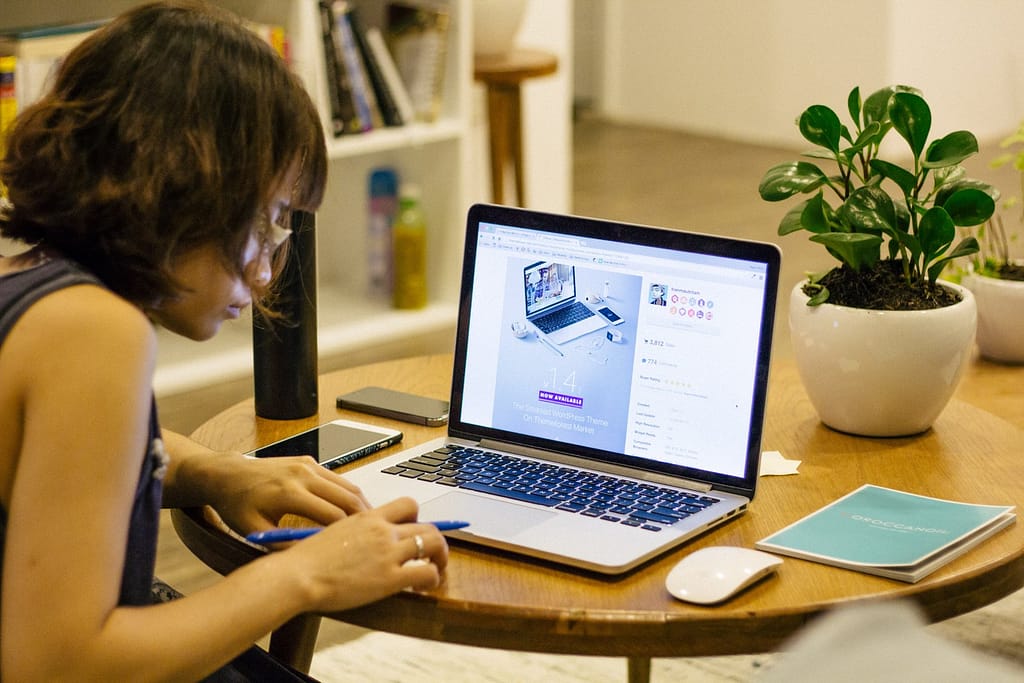Looking to transform your spare room into a dream home office? Look no further than the expert advice of Emily Carter, our Chief Content Strategist and renowned home office design expert. With over a decade of experience in the field, Emily combines her deep understanding of design principles with a passion for creating functional and aesthetically pleasing work environments. Her articles cover a range of topics, including ergonomic principles, product reviews, DIY solutions, and sustainable practices. Emily’s friendly and conversational tone, along with her use of visual and interactive elements, make her articles both informative and engaging. Whether you’re a remote work veteran or just starting to set up your home office, Emily’s articles will provide valuable insights and practical tips for creating the perfect workspace.

Understanding Your Available Space
When it comes to creating your dream home office, understanding your available space is crucial. Start by measuring the dimensions of the room you plan to transform. This will give you a clear idea of how much space you have to work with and help you plan the layout of your office furniture and equipment.
In addition to measuring the dimensions, identify any potential obstructions in the room. Are there windows, doors, or outlets that could impact the placement of your furniture or the flow of the room? By considering these factors upfront, you can avoid any surprises and ensure that your home office design is both functional and aesthetically pleasing.
Lastly, don’t forget to take into account the light and noise factors in your space. Natural light can boost your mood and productivity, so try to position your desk near a window if possible. If there are noise distractions in the room, consider adding soundproof curtains or a white noise machine to create a more focused and peaceful environment.
Defining Your Home Office Needs
To create a home office that suits your needs, it’s essential to identify both your professional and personal requirements.
Begin by assessing your professional needs. What type of work do you do? Do you require a large desk for spreading out paperwork or a dedicated space for video conferencing? Consider your workflow and the tools you use on a daily basis to determine the practical elements your home office should include.
Next, think about your personal comfort. Are you someone who prefers a standing desk or do you work better sitting down? Consider investing in an ergonomic office chair that provides proper support for your back and promotes good posture. Additionally, think about any other factors that contribute to your comfort, such as temperature control, adjustable lighting, or a comfortable rug under your feet.
Don’t forget to plan for storage solutions as well. Assess how much storage you need for your documents, supplies, and equipment. Invest in storage bins, shelves, or cabinets to keep your workspace organized and clutter-free.
Lastly, include room for breaks and relaxation in your home office design. Create a cozy corner with a comfortable chair or a small sofa where you can take short breaks and recharge. Adding plants or artwork can also help create a more uplifting and inspiring atmosphere.
Choosing Your Home Office Style
Your home office should reflect your personal style and preferences. Here are a few popular options to consider:
- Minimalist home office: If you prefer a clean and clutter-free workspace, opt for a minimalist design. Choose simple and sleek furniture with minimalist decor accents to create a calming and focused environment.
- Sustainable home office: Incorporating eco-friendly practices into your home office can make a positive impact on the environment. Look for furniture made from sustainable materials and consider using energy-efficient lighting and technology.
- Pet-friendly home office: If you have furry companions, creating a pet-friendly home office is a must. Choose furniture and flooring that are pet-friendly and consider adding a pet bed or designated pet area in your office space.
- Smart home office: Embrace the latest technology by creating a smart home office. Invest in voice-controlled assistants, wireless charging pads, and smart lighting systems to streamline your workflow and enhance your productivity.
Budgeting Your Home Office Transformation
transforming your spare room into a dream home office doesn’t have to break the bank. Here are some budget-friendly ideas to consider:
- DIY home office ideas: Get creative and repurpose items you already have to create a functional and stylish workspace. Use old crates as storage, turn a vintage table into a desk, or make your own bulletin board using cork and fabric.
- Repurposed furniture for home office: Check out thrift stores, online marketplaces, or garage sales for affordable furniture options. With a little creativity and a fresh coat of paint, you can turn a dated piece into a stylish addition to your home office.
- Upcycled home office decor: Instead of buying new decor items, consider upcycling old ones. Turn mason jars into pencil holders, repurpose old picture frames as whiteboard calendars, or make your own artwork using recycled materials.
- Home office hacks for small spaces: If you’re working with a small room, maximize your space with clever hacks. Invest in wall-mounted shelves or a compact desk that can be easily folded away when not in use. Utilize vertical space with floating shelves or a pegboard for storage.
Creating an Ergonomic Home Office
Ergonomics plays a crucial role in creating a comfortable and healthy home office environment. Consider the following factors:
- Comfortable office chairs: Invest in an ergonomic chair that provides adequate support for your back, neck, and arms. Look for adjustable features like seat height, lumbar support, and armrests.
- Ergonomic keyboards and mice: Avoid strain on your wrists by using ergonomic keyboards and mice that promote a natural hand position. These tools can reduce the risk of repetitive strain injuries and enhance your overall comfort while working.
- Ergonomic footrests: If your feet don’t touch the ground when sitting at your desk, consider using an ergonomic footrest. This will help maintain proper posture and reduce strain on your lower back and legs.
- Standing desk mats: If you prefer to work while standing, invest in a standing desk mat to reduce fatigue and provide cushioning for your feet. Look for options with anti-fatigue features and non-slip surfaces.
Incorporating Tech into Your Home Office
Integrating technology into your home office can enhance your productivity and make your work more efficient. Consider the following tech options:
- Lighting for video calls: Ensure you have proper lighting for video conferences by investing in a ring light or adjustable desk lamps. This will help you look professional and well-lit during virtual meetings.
- Dual monitor stands: Increase your screen real estate and improve multitasking with a dual monitor setup. Invest in a sturdy dual monitor stand that allows you to adjust the height and angle of your screens.
- Wireless chargers for home office: Keep your devices powered up and tangle-free with wireless chargers. Simply place your smartphone or other compatible devices on the charging pad to replenish their battery.
- Cable management for home office: Tidy up your workspace by managing your cables effectively. Use cable management solutions like cable clips, cable sleeves, or cable boxes to keep your cords organized and prevent them from becoming tangled.
Designing for Productivity and Motivation
Designing your home office to promote productivity and motivation is essential for creating a successful work environment. Consider the following design elements:
- Home office plants that improve air quality: Incorporate indoor plants into your workspace to improve air quality and create a calming atmosphere. Choose low-maintenance plants like snake plants, pothos, or peace lilies.
- Whiteboard walls for brainstorming: Turn one wall of your home office into a whiteboard surface. This allows you to jot down ideas, brainstorm, and keep track of tasks or deadlines easily. Simply use dry erase markers to write and erase as needed.
- Home office libraries: Create a mini library in your home office by adding a bookshelf or wall-mounted shelves. Fill it with inspiring and educational books that can serve as a source of motivation and personal growth during your work breaks.
- DIY lighting solutions: Get creative with lighting by adding DIY touches to your home office. Consider using string lights, fairy lights, or LED light strips to create a warm and inviting ambiance. Experiment with different lighting options to find what works best for you.
Maintaining a Healthy Home Office Environment
Taking care of your physical and mental well-being is essential when working from home. Here are some tips for maintaining a healthy home office environment:
- Healthy snacks for home office: Stock up on nutritious snacks like fruits, nuts, or granola bars to keep your energy levels up throughout the day. Avoid unhealthy temptations by keeping a supply of healthy options within reach.
- Home office meal prep tips: Plan your meals in advance to avoid spending unnecessary time and energy during your work breaks. Prepare healthy meals or snacks in batches that can be easily reheated or assembled quickly.
- Meditation apps for focus: Incorporate mindfulness and meditation into your daily routine to improve focus and reduce stress. Choose from a variety of meditation apps that offer guided sessions or ambient sounds to create a calm and peaceful atmosphere in your home office.
- Online courses for productivity: Continuously invest in your professional development by taking online courses related to your field or areas of interest. This will not only enhance your skills but also provide a sense of motivation and growth in your home office environment.
Engaging with Your Work From Home Community
Working from home can sometimes feel isolating, but there are ways to stay connected with your remote work community:
- Video call backgrounds for home office: Add some fun and personality to your video calls by using virtual backgrounds. Choose from a variety of pre-made backgrounds or create your own custom backgrounds that reflect your interests or hobbies.
- Virtual assistants for remote workers: Virtual assistants can help you manage your tasks, schedule, and reminders, keeping you organized and on top of your work. Choose from a variety of virtual assistant software options and find one that works best for your needs.
- Remote work communities: Join online communities or forums for remote workers to connect with like-minded professionals. These communities provide opportunities for networking, sharing ideas, and finding support in the challenges of working from home.
Understanding Home Office Personal Finances
Managing your personal finances in relation to your home office can have significant benefits. Consider the following aspects:
- Tax deductions for home office: Familiarize yourself with the tax deductions available for your home office expenses. Consult with a tax professional or research the specific deductions that apply to your country or region.
- Home office insurance: Check with your insurance provider to ensure that your home office equipment and supplies are adequately covered. Consider getting specific home office insurance to protect your investment and provide peace of mind.
Creating your dream home office is within reach, regardless of your budget or available space. By understanding your space, defining your needs, and incorporating ergonomic and tech elements, you can design a workspace that supports productivity and motivation. Don’t forget to prioritize your health and engage with your work from home community. Lastly, stay informed about any relevant personal finance considerations such as tax deductions and insurance. With a little planning and creativity, you can transform your spare room into a dream home office that inspires and empowers you to do your best work.







